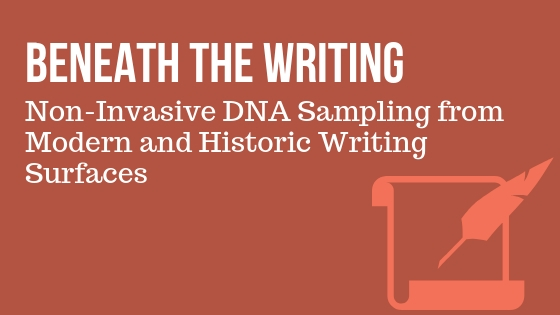We can learn a lot about the past and its people from the written records of the time. What people write and how they write it can gives us glimpses into historical events, interpersonal relationships, social standing and even social and cultural norms. From paper to papyrus to clay tablets, the surface that holds the writing can tell us things that the words cannot.
For plant-based writing surfaces, the quality of the surface or even the technique used to make it can give historians and archeologists insight into the people who used them. What more could we learn if we knew what plant, or plants, were used in the production of ancient writing material?
Written by: Kelly Grooms, Promega
Unfortunately most methods for isolating DNA involves physically removing a sample of the material, and this is not a viable option when dealing with ancient and precious items. Even using more invasive techniques, the amount of DNA that can be recovered from paper is relatively low. This is most likely a result of the chemical and heat processing that the plant material undergoes in the paper-production process. Therefore, establishing a non-invasive method to sample DNA from writing material would be useful. The authors of a PLoS ONEpaper published in June 2018 investigated methods for isolating DNA from writing support surfaces using sampling methods that would not penetrate the material’s surface.
Shultz et al. evaluated both eraser sampling and positively charged nylon binding membranes as non-invasive sampling methods on three writing surfaces (modern paper, modern papyrus and 18th century palm leaf), although they note that the eraser method would not work on very delicate surfaces. Following DNA isolation, the DNA yield was determined using fluorescent DNA dye (QuantiFluor® ds Dye System with Quantus™ Fluorometer) and real-time PCR. The authors concluded that the nylon membranes, as long as they were wet, could successfully recover low amounts of DNA from all the writing surfaces tested.
This method offers a way to collect DNA information from the surfaces of valuable written materials without damaging the integrity of the document. The authors found that applying dampened, positively charged nylon membranes to the writing surface was enough to recover endogenous DNA from the sample. This method could be offered as another tool to those studying historic documents, offering insight into the source of the writing surface as well as helping them date the document and understand the degradation patterns of historical records.
Reference
- Schultz, A. et al. (2018) Not stealing from the treasure chest (or just a bit): Analyses on plant derived writing supports and non-invasive DNA sampling. PLoS ONE 13, e1098513. (doi.org/10.1371/journal.pone.0198513)
WOULD YOU LIKE TO SEE MORE ARTICLES LIKE THIS? SUBSCRIBE TO THE ISHI BLOG BELOW!


